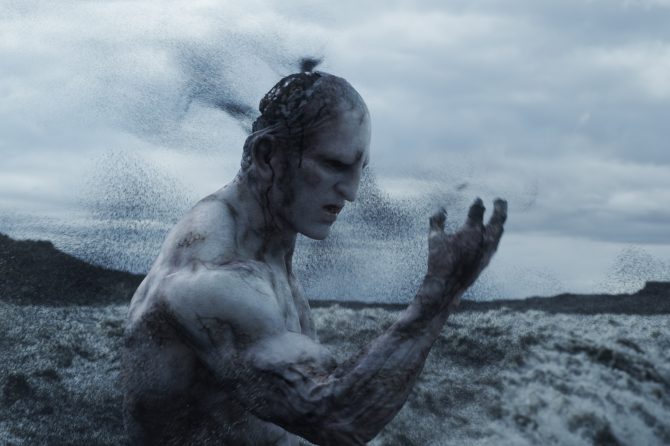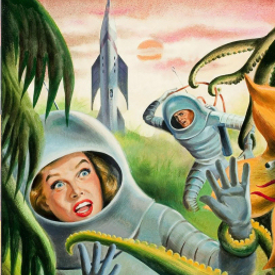
Imagine you were in a position to see Star Wars when it first came out, but you had a lot going on in your life at the time and didn’t get around to it until 1984.
I felt I was in the equivalent situation recently when I finally got around to seeing the genre film of 2009 – and, I guess, of the 21st century to date – James Cameron’s Avatar.
But while missing a major event like that can make us temporarily out of step with the pop cultural world, it can also provide an opportunity later on to have the experience minus the hype.
The comparison with Star Wars is a valid one. Both movies have held the crown of Most Successful Film Ever. Both owed significant debts to earlier stories in other genres as well as their own. And despite those debts, both looked so unlike anything that had come before that they seemed to be industry game-changers.
So, seven years after the film was released – and two years before the first sequel is due – I settled down to watch this SF landmark.
My first impression was the obvious one: Avatar really does look incredible. Visual effects technology is progressing so quickly that you might imagine the film would already have been outpaced by now. But it does render an imaginary universe with incredible richness and detail. I’ve often complained that even the best CGI creatures and spaceships don’t seem solid and real; but Avatar’s planet Pandora is so intricately textured that it dispenses with that problem almost entirely. Watching it at home in 2D, I kept imagining the experience of watching it 40ft wide in 3D.
Avatar also renders animated characters with breath-taking success. Here is a story in which humans adopt the outward appearance of the Na’vi people of the planet Pandora, and do so convincingly enough for us to believe that Earthling Jake Sully (Sam Worthington) and the Na’vi woman Neytiri (Zoe Saldana) could fall in love. The film succeeds almost entirely in persuading the audience to suspend its disbelief.
And yet, with so much vision and brio involved in creating this universe and its people, I was frustrated that this level of imagination wasn’t present all the way through the script.
For one thing, the plot is distractingly familiar. We may be in the 22nd century, with humans mining a far-off planet, but the story is from outside SF. Sully gains acceptance among the Na’vi people, adapts to their ways, and ultimately tries to prevent the humans destroying them. I became distracted by trying to think of the names of westerns in which I’d seen elements of this plot, but one title kept coming to mind most vividly: Dances With Wolves.
Granted, it might be a bit rich for a Star Wars fan like me to criticise another SF film for echoing other movies. But that kind of borrowing is fine for a film like Star Wars, which takes elements from all kinds of other narratives and weaves them into a light-hearted adventure. In a movie as driven by a compulsion to be original and ground-breaking as Avatar, you surely need to take the premise in unexpected directions.

At the heart of Avatar’s story are some contrivances so obvious that it’s astonishing they weren’t at least refined a bit in the scripting. We know Earth has suffered some catastrophe that has compelled its people to exploit the resources of other planets – so far, so familiar. But then we learn that Pandora is rich in an enormously valuable substance called Unobtanium. Unobtanium? Seriously? I didn’t know until recently that the word already existed as a joke among scientists and some SF fans.
In the Avatar universe, we know nothing about Unobtanium except that it’s extremely valuable. Who has declared it valuable, and what use is it to humans? No one tells us. But guess what? The Na’vi people are sitting on a huge pile of it. With no more explanation than that, we’re asked to accept one of the most shameless MacGuffins in the history of screenwriting. The script might as well have had someone say “Sir, the Na’vi village is built on a huge plot device.”
From this premise, Cameron sets up an all too simplistic conflict. The military types among the humans want to destroy the Na’vi to get at the Unobtanium. They’re not even conflicted about it; they actually relish the prospect of destroying life.
The humans (aside from a handful of good guys) want war; the indigenous people want peace. You might imagine Cameron would at least complicate things by having some militants among the Na’vi who seek to terrorise the planet’s occupiers, but the plot doesn’t get that sophisticated. Cameron’s script follows a simplistic moral schema, just like his Titanic, with its historically inaccurate scenes of the lower classes being shot for attempting to get into the lifeboats.

The plot seems to put Sully in an impossible situation, unable to go back to his own species but rejected by the Na’vi because of his deceit in pretending to be one of them. Yet his problem is resolved surprisingly easily as he leads the Na’vi resistance to the humans.
There is something potentially subversive, even unsettling, in having the audience cheer on the indigenous people as they destroy American military might, but Cameron seems in no mood to entertain any moral ambiguity – not even at the end, when he has the defeated humans dispatched home to their presumably dying planet.
I’ve rarely felt as conflicted about a genre film as I did about Avatar. Its scale, its visual imagination and its ambition are huge, and they almost succeed in sweeping away my objections to its logic. Yet its deficiencies as a story would let down a 1950s B-movie.
Four sequels are said to be on the way, starting in 2018. I just hope Cameron will have spent a few of the intervening nine years on getting the story up to the standard of the visuals.











Thanks for the comments. Got to admit I haven’t seen Fern Gully, so I must catch up with that and compare. One non-genre film I suspect it has a lot of similarities with is The Emerald Forest, but I haven’t seen that one all the way through either.
fern gully actually is more accurate. almost a point for point copy of fern gully including the “avatar” (she shrinks the protagonist to fairy size sully gets a navi body)
on the whole though. I don’t care. I thoroughly enjoyed the movie and its plot being simple and reused did not make it less enjoyable to me.
Wow – that is exactly how i felt about it. But I never even considered comparing it to “Dances with Wolves” because I was stuck on the similarity to the “Fern Gully” movies.